Wild Strawberry
Leaves and stem
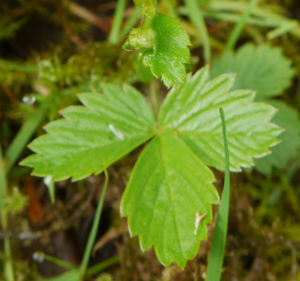
The leaves are compound leaves, being composed of leaflets. There are three leaflets; the leaf is also described as trefoil.
When young, the leaves are a bright shiny green but the green darkens as the leaf matures.
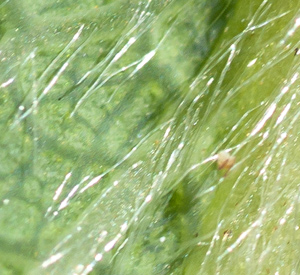
The lower surface (abaxial surface) of the leaves is paler (than the top surface) and there are hairs that are pressed close to the leaf surface.
Flowers and Fruits
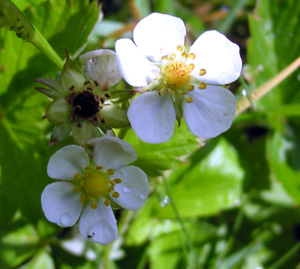
The wild strawberry flowers between April and July, producing white flowers – though sometimes there may be a slight touch of pink to them.
The flowers are quite small (between ½ to ¾ inch across, 10-20 mm), occurring in small clusters. The flowers have 5 petals and 5 sepals, with numerous stamens within the flower. There are no spaces / gaps between the un-notched petals (compare with the barren strawberry – which does have gaps).
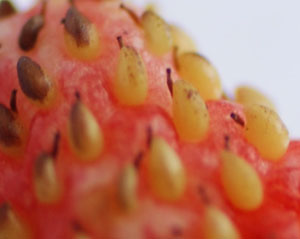
The fruit is green at first, but gradually ripens to a red colour. The pips or seeds that form on its surface are not sunken into the fruit (as is the case for cultivated strawberry) but protrude above the surface of the fruit. The fruit is small, about 1 cm across. The stalk of the fruit has small hairs that point towards the fruit.
Ecology and other notes
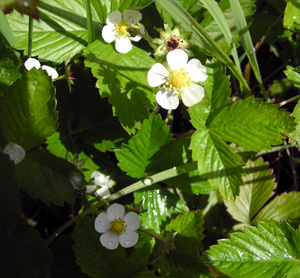
The Wild Strawberry (Fragaria vesca) belongs to the Rose family (Rosaceae), and it belongs to the same genus as the cultivated strawberry. The latter is of hybrid origin (formed by crossing two species, and then an increase in the number of the chromosomes – polyploidy). Like the cultivated strawberry, the fruit of the wild strawberry is fleshy and covered with seeds on the outside – the tiny brown ‘flecks’ of the strawberry.
The wild strawberry is a plant of open woodland, banks and grassy places. The herbal / medicinal uses of the wild strawberry may be found here.